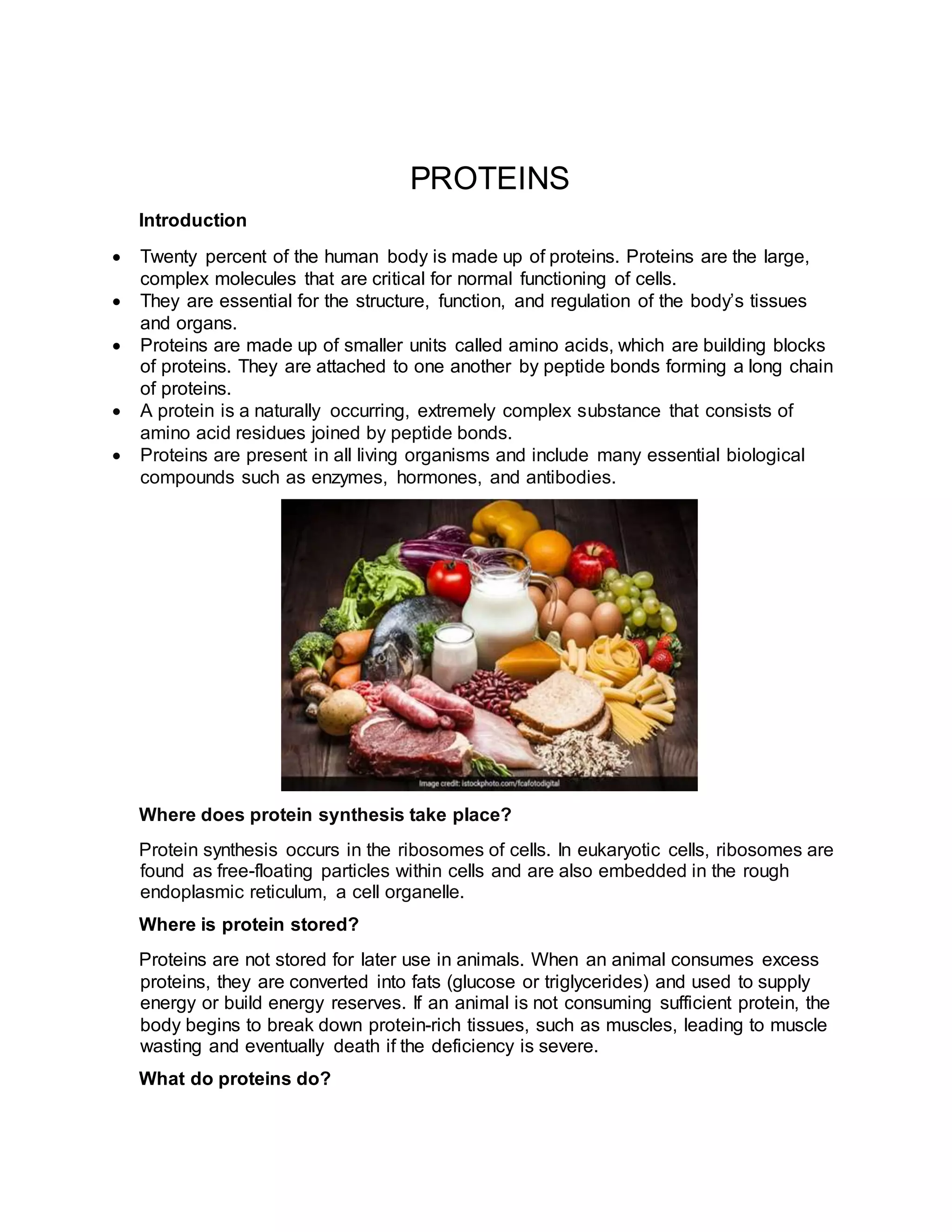Proteins are essential macromolecules that make up 20% of the human body. They are composed of amino acids and perform many critical functions including structure, regulation, catalysis, movement and more. Protein synthesis occurs in ribosomes within cells. Proteins are not stored but are broken down if excess amino acids are consumed. They have primary, secondary, tertiary and quaternary levels of structure determined by amino acid sequence and interactions. There are 20 standard amino acids that are linked by peptide bonds to form proteins.














